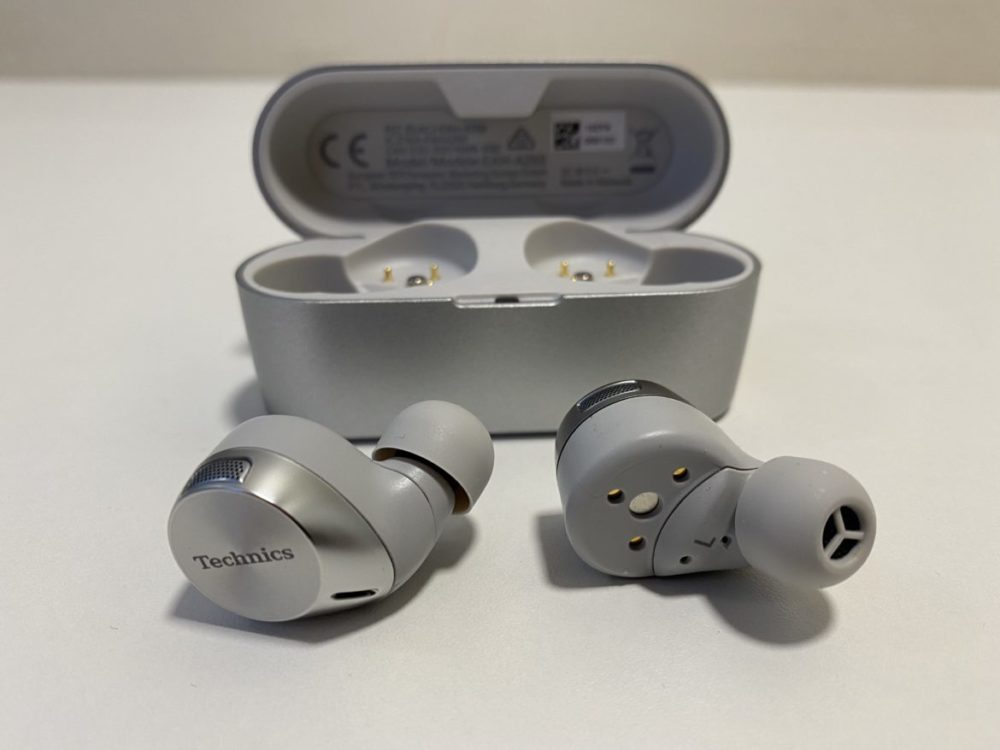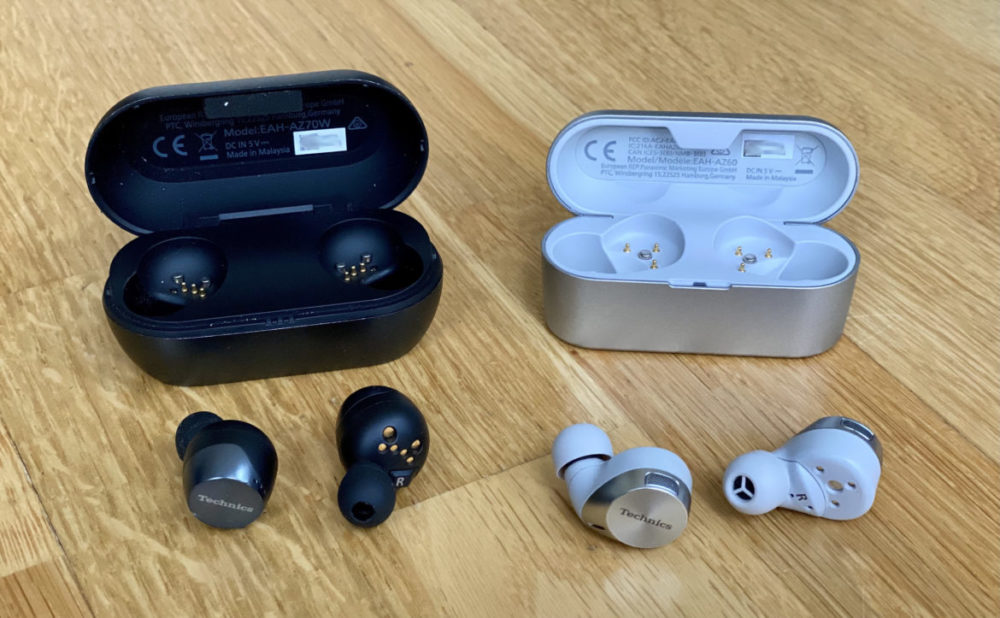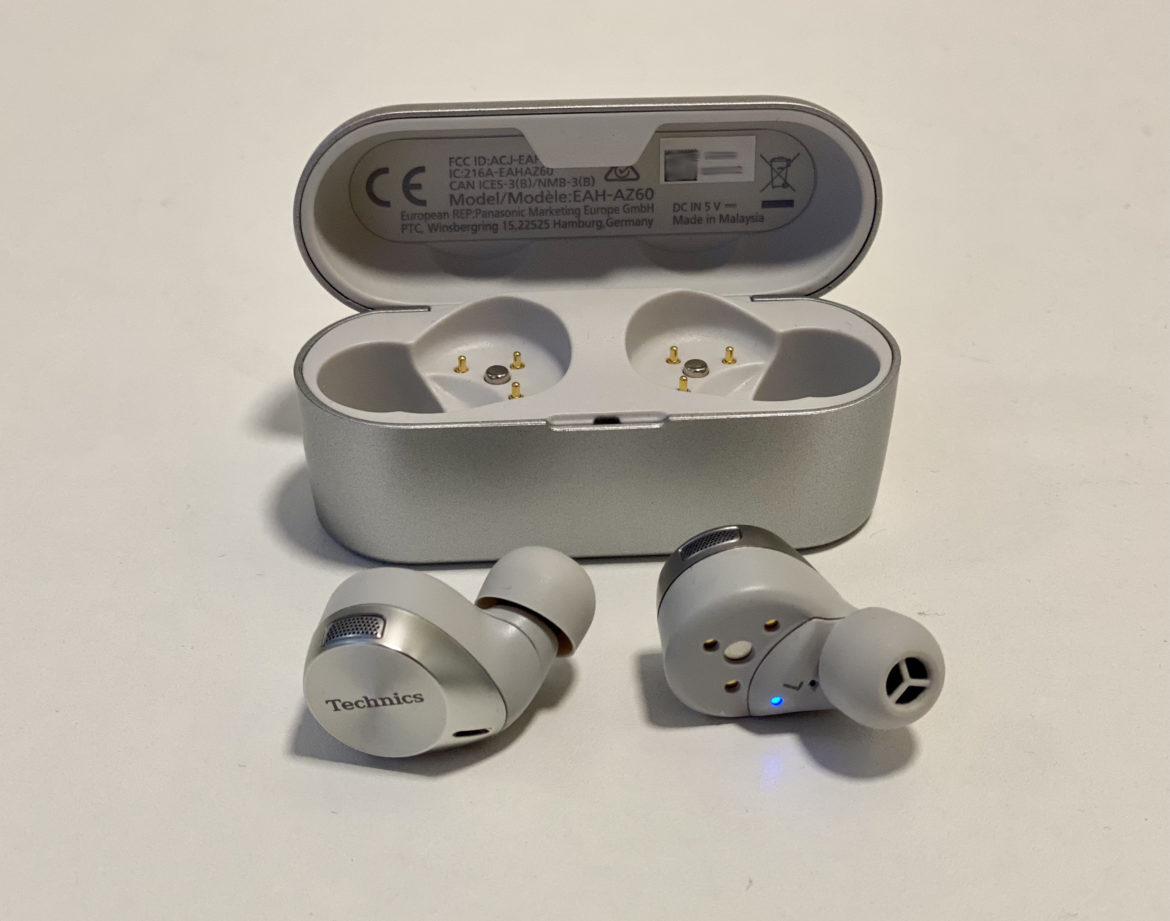TL;DR
Technics' EAH-AZ60 earbuds aim for the mid-price segment, offering a more streamlined, plastic build than their premium predecessor. Despite a less luxurious feel, they impress with exceptionally fast and stable pairing, a comfortable and secure fit ideal for activity, and satisfying, neutral sound quality. LDAC support enhances audio for Android users, while improved microphone performance ensures clear calls. Battery life is solid, and Active Noise Cancellation is effective. While the aesthetics might be a bit bland, the performance features make them a strong contender for those prioritizing function over form. Curious to see if the performance outweighs the plastic? Read on!
Technics, Panasonic’s renowned audio brand, impressed last year with the luxurious EAH-AZ70, which delivered both a premium feel and excellent sound. This year, they’ve introduced the Technics EAH-AZ60, a more streamlined model featuring a plastic construction (as opposed to aluminum), slightly smaller speaker elements, and the inclusion of the LDAC HD codec. Priced approximately 30% lower than its predecessor, the key question is: what performance can be expected from these earbuds in the mid-price segment? Let’s find out.
Initial impressions of the AZ60 are somewhat muted. The earbuds are available in “white” and black finishes; our test unit was the “white” version, which presents as more of a gray-silver hue, differing significantly from the typical “white” associated with products like AirPods or the B&W PI7. The charging case has a distinctly plastic look and feel. The earbuds themselves utilize shades of gray, complemented by a reflective silver edge that subtly enhances the visual appeal. The redesigned earbud shape, however, proves to be advantageous for fit, which we will elaborate on below.

The AZ60 exhibited remarkably smooth and rapid pairing with source devices (in our case, a smartphone) right out of the box. Having evaluated numerous true wireless earbuds over the years, it’s rare to encounter a pair that connects as quickly and consistently as the Technics AZ60. Impressively, at the time of this initial testing, no software (firmware) updates were available, making its performance even more noteworthy, as many earbuds experience initial software-related issues (we’re looking at you, Sennheiser Momentum TWS 2). Credit is due to the software engineers at Panasonic/Technics, who have evidently optimized the capabilities of the incorporated Bluetooth 5.2 technology.
Earbud fit was not a strength of Panasonic and Technics’ previous models. The design, which concentrated the electronics and weight in the sound chamber, resulting in a significant protrusion from the ear, proved problematic. This design impacted the usability of both the RZ-500W and EAH-AZ70 during activities like exercise or cycling. The AZ60 addresses this with a lighter build, a smaller driver (8mm instead of 10mm), and a “droplet-shaped” design intended to facilitate a more comfortable and secure fit within the ear. Consequently, the earbuds now sit much more securely, making them suitable for exercise and cycling – a significant improvement for an earbud marketed for “lifestyle” use.

Similar to the recently reviewed (and remarkably affordable) ZERO-TX, the sound quality appears to be more dependent on the driver quality and software implementation than the diaphragm size alone. Despite having a driver that is 20% smaller than the AZ70’s, the AZ60 does not suffer in bass response. Overall sound quality is satisfying; whether listening to Magnus Carlsson‘s Blue and Alone, or Marianne Faithful‘s The Ballad of Lucy Jordan, the AZ60 delivers a crisp and warm presentation. More electronic tracks, such as Dooh Dooh by Barcode Brothers, present a greater challenge, but the Technics earbuds handle them smoothly, without exaggerating any frequency ranges or underperforming in the bass. The AZ60 reproduces sound in a relatively neutral and uncolored manner, which offers advantages and disadvantages depending on individual tastes and preferences. In essence, these feel like competent all-around earbuds, perhaps not excelling in any particular genre, but performing adequately across the board.

When paired with an Android device, the activation of LDAC provides a further improvement in sound quality, particularly with high-resolution sources like Tidal. While the difference isn’t dramatic, any enhancement in quality is appreciated. Panasonic deserves recognition for incorporating LDAC, even in their TWS products (previously available in the RP-HD605), as it enables higher bitrate streaming compared to SBC and AAC. We now await Apple’s introduction of a high-resolution codec on iPhones (Macs at least support aptX…).
Another significant advantage is call quality. The AZ60 delivers clear audio for the user and ensures that the other party can also be heard clearly. Furthermore, using a single earbud for phone calls is supported. The number of microphones has been increased to eight (four per earbud), utilizing directional microphones and “beamforming” technology. Beamforming employs DSP to analyze sound and prioritize relevant audio. These microphones also contribute to the adjustable Active Noise Cancellation (ANC), which can be customized within the app. The “medium” setting proved effective in mitigating subway noise without creating an overly isolating “silent bubble.”

Battery life is commendable, clocking in at just over six hours at reasonable volume levels. The charging case provides approximately four additional charges, ensuring sufficient power for extended trips. The earbuds are IPX4-rated, offering resistance to rain and sweat, a common feature today. However, it’s important to note that this rating applies only to the earbuds and not the charging case, which should be protected from rain.

In summary, the Technics EAH-AZ60 offers a compelling feature set. The primary drawback is the somewhat uninspired and plastic-dominated material selection, which feels somewhat underwhelming considering the price point (a sub-SEK 2,000 price would be more appropriate). However, the sound quality is genuinely good, the fit is significantly improved compared to previous models, microphone performance is enhanced, and source device connectivity is exceptional. The inclusion of LDAC is a welcome addition for Android users. Ultimately, those prioritizing performance over aesthetics can consider the EAH-AZ60 a worthwhile purchase recommendation.

